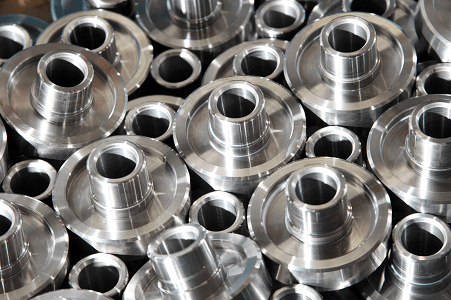 When considering the alloy specification for a cast Stainless Steel component, it is critical that the service environment in which the cast component will be deployed is taken into account. The chemical composition of the Stainless Steel alloy will determine its performance characteristics and suitability for each application. At NovaCast, we supply a wide variety of cast Stainless Steel components including those for valves and pumps used in harsh environments where heat and corrosion (both internally and externally) are important factors in component design and specification.
When considering the alloy specification for a cast Stainless Steel component, it is critical that the service environment in which the cast component will be deployed is taken into account. The chemical composition of the Stainless Steel alloy will determine its performance characteristics and suitability for each application. At NovaCast, we supply a wide variety of cast Stainless Steel components including those for valves and pumps used in harsh environments where heat and corrosion (both internally and externally) are important factors in component design and specification.
To be classified as a Stainless Steel in the first place, a ferrous alloy must contain a minimum of 10.5% Chromium. This is the element largely responsible for resistance to corrosion and oxidisation because it creates a passive layer that protects against further oxidisation. Other elements can be included to further refine performance characteristics including Carbon, Nitrogen, Silicon, Sulphur, Titanium, Nickel, Copper, Niobium and Molybdenum.
So What do the main Alloying Elements do?
Carbon: Improves strength and hardness of martensitic grades at higher temperatures
Chromium: Imparts a passive layer that reduces corrosion and oxidisation. Higher levels of Chromium in the alloy result in greater protection.
Molybdenum: When introduced to Stainless Steel alloys (such as CF8M and CF3M) Molybdenum improves resistance to pitting and crevice corrosion caused by Chloride attack in coastal and de-icing applications.
Nickel: An essential alloying element in the most widely used cast Stainless Steels (CF8 and CF3). It results in the formation of an “Austenitic” structure that improves strength, ductility and toughness. Improves resistance to acid attack and makes the alloy non-magnetic.
Nitrogen: In Austenitic and Duplex Stainless Steel, Nitrogen can provide better corrosion resistance and higher strength while maintaining toughness and ductility.
Manganese: Assists in de-oxidation during melting and prevents the formation of Iron Sulphide inclusions, which can cause hot cracking.
Copper: When added to austenitic Stainless Steels containing Molybdenum it improves corrosion resistance to Sulfuric Acid.
Silicon: Improves resistance to oxidation and prevents carburising at elevated temperatures in austenitic Stainless Steels.
Titanium/Niobium: Ties up Carbon and prevents inter-granular corrosion in the welded zone of ferritic grades.
Broadly speaking, Stainless Steels are classified as either heat-resistant or corrosion resistant, with the carbon-content of the alloy generally dictating where they sit. All corrosion-resistant steels contain more than 11% Chromium but must also contain between 1 and 30% Nickel, this improves both ductility and strength while also improving resistance to corrosion from neutral chloride solutions and weakly oxidising acids.
Heat-resistant cast Stainless Steel must be able to operate within specification when exposed to temperatures in excess of 650°C. The chemical composition can be similar to corrosion-resistant Stainless Steels except that they contain a higher carbon content which gives greater strength at higher temperature.
For help and advice, to discuss your requirements or to get a quote, call a member of NovaCast’s team on +44 (0) 1225 707466, send us a message here or email sales@novacast.co.uk.